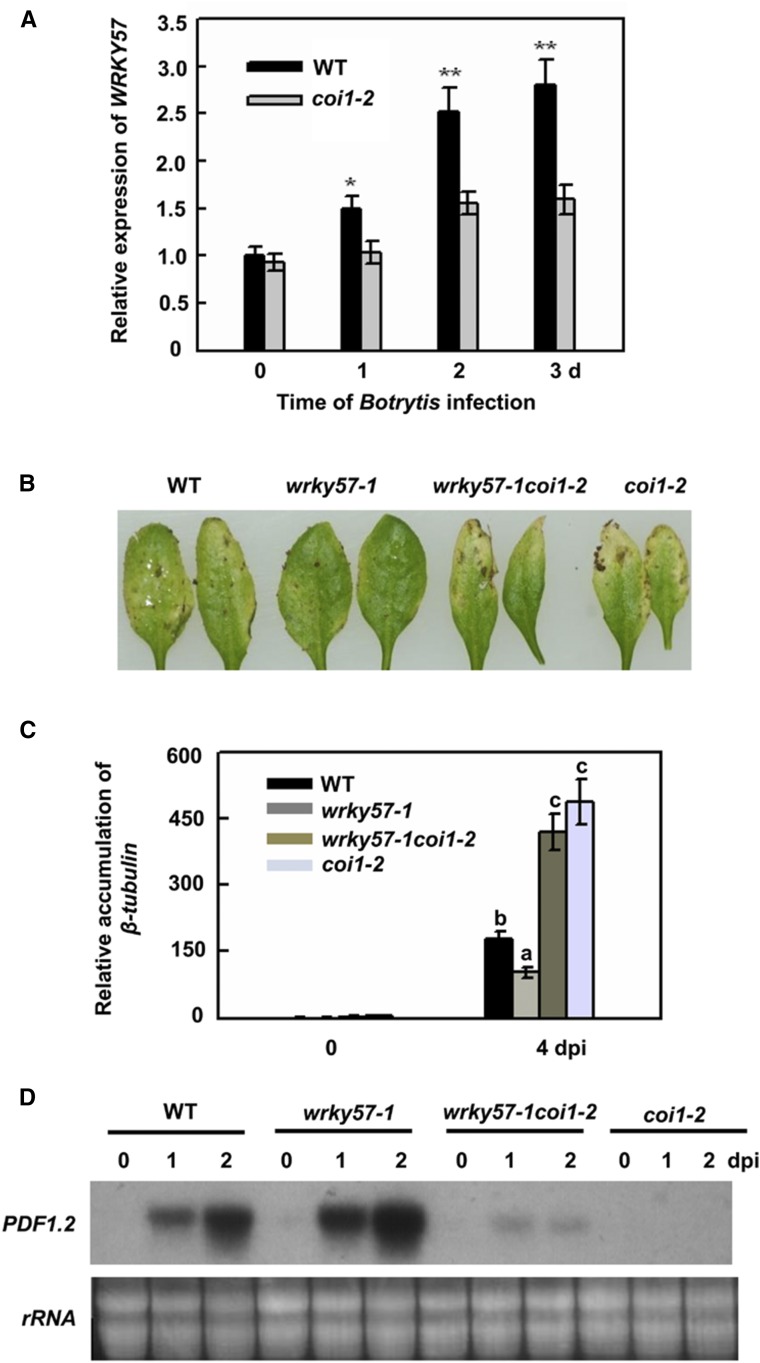Figure 3.
The negative regulation of WRKY57 against B. cinerea relates to the JA signaling pathway. A, Wild-type and coi1-2 plants were spray-inoculated with B. cinerea and leaf samples were taken at the indicated time points to quantify the transcript levels of WRKY57 by real-time RT-PCR. Error bars represent se of five biological replicates (n = 5, *P < 0.05, **P < 0.01). B, Responses to B. cinerea using wild-type, coi1-2, and wrky571-coi1-2 whole-plant inoculation. All plants were inoculated by spraying spore suspension at a density of 5 × 104 spores/mL, then kept at high humidity. Photographs of representative leaf were taken 4 dpi. The experiments were repeated three times with similar results. C, Estimation of the biomass of the fungal pathogen on an infected plant. Total RNA was isolated from the plants 4 d after inoculation and quantified with a B. cinerea Actin gene probe to determine the biomass of the fungal pathogen on infected plants. Values are mean + se (n = 5 experiments), and different letters above columns indicate significant differences based on Tukey’s test (P < 0.05). D, Expression of PDF1.2 in wild-type, coi1-2, and wrky571-coi1-2 plants after B. cinerea infection. Wild-type, coi1-2, and wrky571-coi1-2 plants were inoculated with B. cinerea. The inoculated leaves were collected at the indicated days after inoculation for RNA isolation. RNA gel blot analysis was performed with a 32P-labeled PDF1.2 DNA fragment. Ethidium bromide staining of rRNA is shown for the assessment of equal loading. The experiments were repeated three times with similar results.

